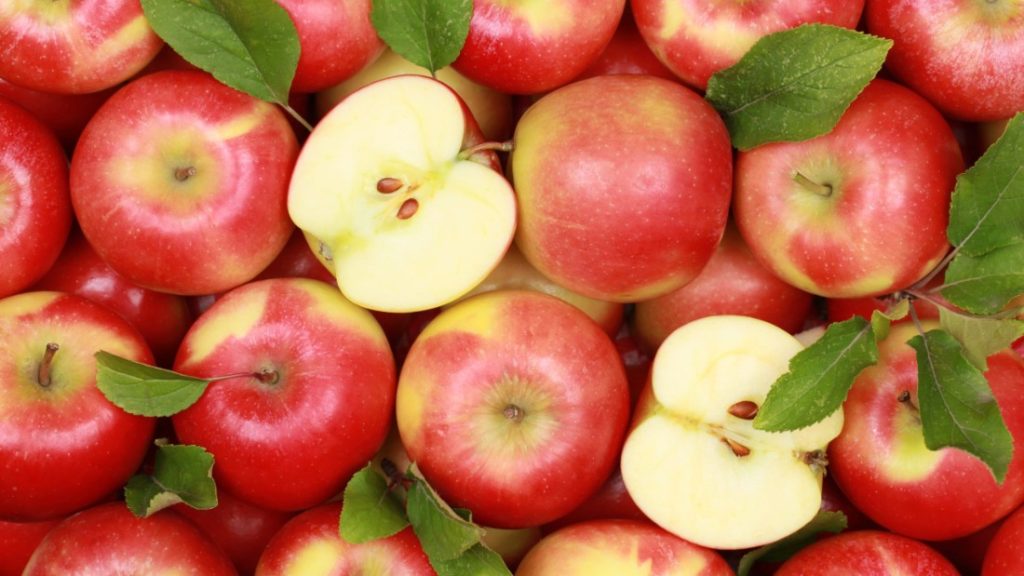Table of Contents
APPLES AND ARITHMETIC
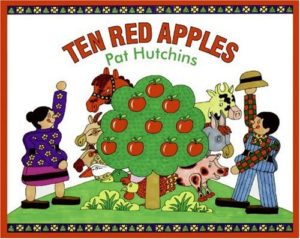
|
Pat Hutchins’s Ten Red Apples (Greenwillow Books, 2000) is a rhyming counting tale in which a succession of farm animals eat the ten red apples off the apple tree – leaving none for the farmer’s wife to bake in a pie. (Luckily she finds a second apple tree.) The farmer, his wife, and the animals are all pictured as bright-colored wooden Noah’s-ark-type toys. For ages 3-6. |
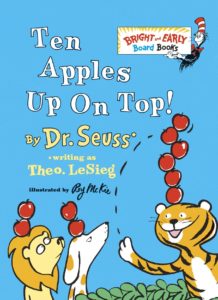 |
By the incomparable Dr. Seuss (writing as Theo LeSieg), Ten Apples Up on Top (Beginner Books, 1961) features a trio of hilarious and competitive animals who vie to see who can balance the most apples on top of their heads. For ages 3-6. |
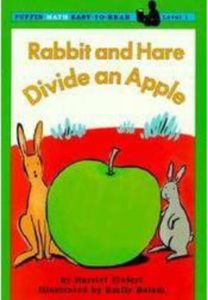
|
In Harriet Ziefert’s Rabbit and Hare Divide an Apple (Puffin, 1998), a giggle-promoting introduction to division, Rabbit and Hare attempt to divide an enormous mushroom – and end up fighting over the two unequal pieces. The argument is settled by a self-serving Raccoon, who offers to fix things by taking a bite out of the larger piece – but then proceeds to eat the whole thing. Rabbit and Hare next prepare to divide a humongous apple, and this time sensibly turn down help from the raccoon and neatly solve the problem for themselves. For ages 3-7. |
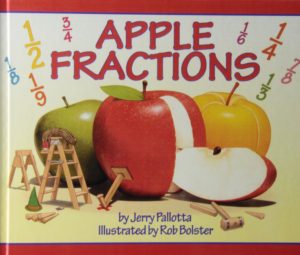
|
In Jerry Pallotta’s Apple Fractions (Cartwheel Books, 2003), elves equipped with sawhorses and carpenter’s tools divide an enormous red apple into halves, thirds, fourths, fifths, and so on. Also included is a scattering of apple facts. For ages 4-7. |
MAGICAL, MYTHICAL APPLES
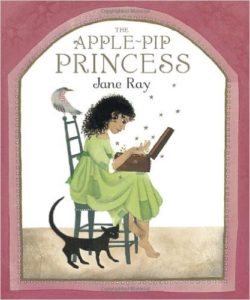
|
In Jane Ray’s sumptuously illustrated fairy-tale, The Apple-Pip Princess (Candlewick, 2008), the dying queen offers each of her three daughters a gift to remember her by. Suzanna, the oldest, choses a pair of scarlet shoes; Miranda, the middle princess, a pearl-trimmed mirror; and Serenity, the youngest, a simple wooden box containing simple treasures from nature: a “splash of sunlight,” raindrops, a bird’s feather, and an apple pip. Then the king proposes a competition to see which of the three girls should become the next ruler of the kingdom – the winner, he declares, will be the princess who best makes her mark. The elder sisters build enormous self-aggrandizing towers, while Serenity plants her apple seed. A beautiful tale for ages 4 and up. |
| There are dozens of versions of the story of Snow White, famously taken in by a poisoned apple. See The Annotated Snow White & the Seven Dwarfs for an annotated version of the fairy tale, a long list of Snow White books and movies, a gallery of illustrations, and a collection of similar tales across cultures. | |
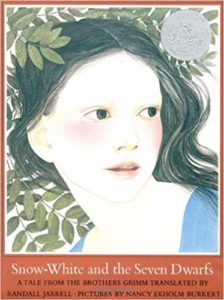
|
One of the most beautiful of Snow White tales is Snow-White and the Seven Dwarfs (Square Fish, 1987), translated by Randall Jarrell and exquisitely illustrated by Nancy Ekholm Burkert. My favorite. |
| Top Ten Apples in Mythology is an illustrated overview of famous apples in myths, including Atalanta and the Golden Apples (the “Apple of Trickery”), the Apple of Discord that started the Trojan War, and the Norse Apples of Immortality. | |
| Read the tale of Hercules and the Apples of the Hesperides, illustrated with scenes on ancient Greek pottery. | |
| Also see MYTHOLOGY. | |
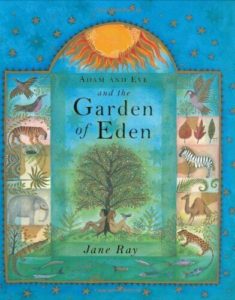 |
Jane Ray’s enchantingly illustrated Adam and Eve and the Garden of Eden (Eerdman Books for Young Readers, 2005) is a lovely account of the Christian creation myth, complete with snake and apple. For ages 4-8. |
| How much do you know about apples? Find out by taking the online quiz on Apples of Literature, History, and Myth. |
ASTONISHING APPLE ART
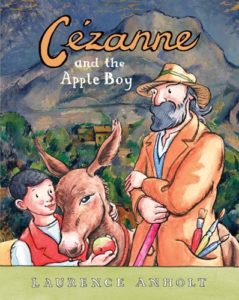 |
Laurence Anholt’s Cezanne and the Apple Boy (Barron’s Educational Series, 2009) is a fictionalized story in which young Paul accompanies his often-absent impressionist painter father, Cezanne, on a painting expedition in the mountains of southern France. The two form a bond; young Paul comes to appreciate his father’s paintings; and Cezanne paints a portrait of his son. He explains that his painting style involves turning everything into simple shapes – and tells Paul that he is “as round as a sweet little apple.” One of a series about famous artists for ages 4-8. |
| The Apple of Our Eye is a survey of apples in art, with images of works by (among others) Cezanne, Renoir, Gauguin, Klee, O’Keeffe, and Magritte. | |
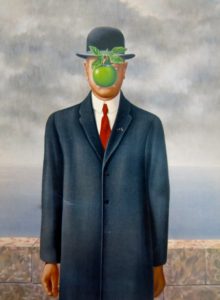 |
Learn about Rene Magritte’s famous surrealistic green-apple painting, The Son of Man. |
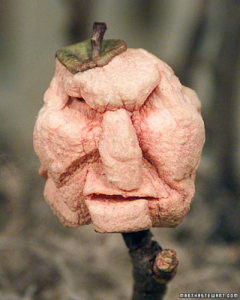 |
See these instructions for making great dried-apple dolls. |
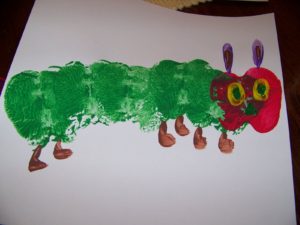 |
Make an apple-print caterpillar. |
